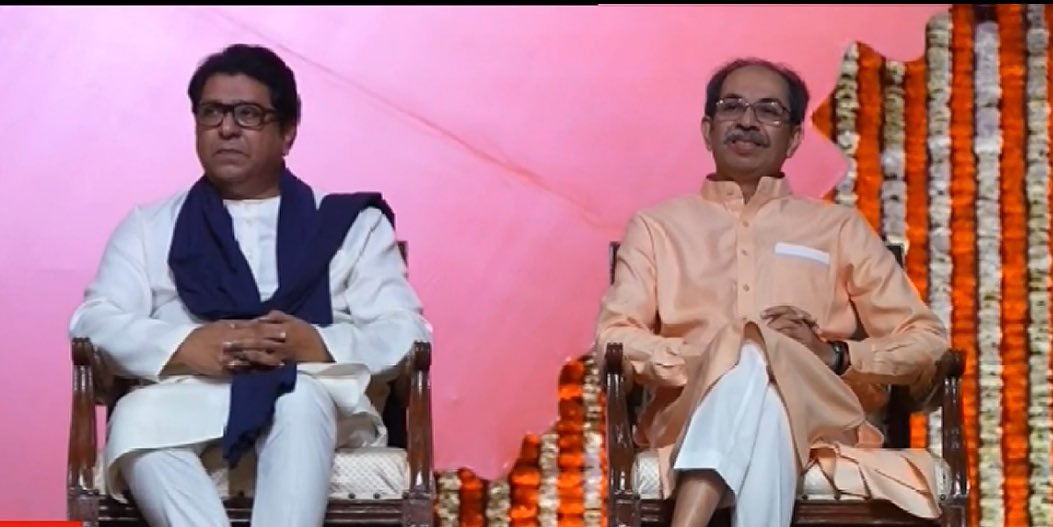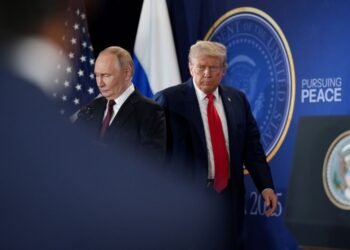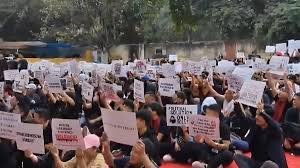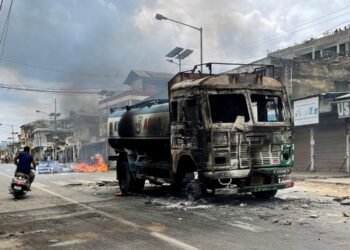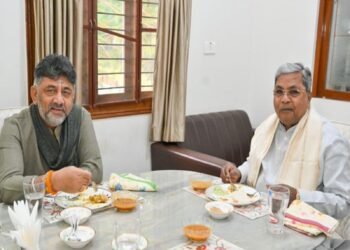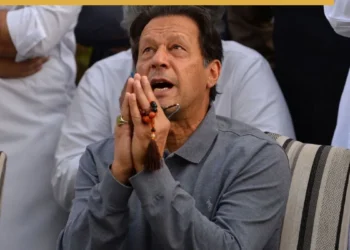Their public unity at the ‘Awaj Marathicha’ rally is being seen as a strategic move to challenge the Mahayuti coalition in upcoming civic elections.
By PC Bureau
July 5, 2025–The unexpected political reunion between Uddhav Thackeray and Raj Thackeray at the ‘Awaj Marathicha’ rally in Mumbai has sent ripples through Maharashtra’s already volatile political landscape. Two decades after a bitter split, the estranged cousins appeared on the same platform, projecting a message of Marathi unity, cultural pride, and potential political collaboration. While many interpreted the optics as symbolic, seasoned observers know that such symbolism, especially in Maharashtra politics, rarely comes without deeper strategic calculations.
At its core, the Thackeray cousins’ coming together is an attempt to reclaim the fragmented Marathi vote. Since Raj Thackeray broke away from the Shiv Sena in 2006 to form the Maharashtra Navnirman Sena (MNS), and especially after the Shiv Sena’s internal split in 2022, the once-dominant bastion of Marathi regionalism has weakened. With the Shiv Sena divided between Uddhav’s faction and the Eknath Shinde-led group, and the MNS increasingly marginalized, a united front of the two original heirs to Balasaheb Thackeray’s legacy could consolidate a large section of the Marathi-speaking electorate—especially in urban centres like Mumbai, Thane, and Nashik.
READ: Heatwave continues, Srinagar swelters at 37.4 degrees
The timing is crucial. With elections to the Brihanmumbai Municipal Corporation (BMC) and other civic bodies around the corner, the Thackeray cousins have an opportunity to challenge the ruling Mahayuti coalition, led by the BJP along with the Shinde Sena and Ajit Pawar’s NCP. The BMC is not just the country’s richest municipal corporation but also a symbolic fortress of Shiv Sena’s traditional strength. Reuniting, even loosely, could allow the cousins to position themselves as the rightful inheritors of Balasaheb’s political legacy, both emotionally and electorally
Reunion of both Thackeray brothers — Raj & Uddhav at Worli Dome. Overwhelming response by Marathi people. The venue is literally spilling over with crowd. Defining moment in Maharashtra’s politics. Both Thackeray arrived at venue. pic.twitter.com/HS1nUavaD1
— Sudhir Suryawanshi (@ss_suryawanshi) July 5, 2025
However, the path ahead is anything but smooth. Despite the smiles and shared stage, ideological divergences remain stark. Uddhav has repositioned himself as a moderate, inclusive leader—especially after aligning with Congress and NCP under the Maha Vikas Aghadi (MVA). Raj, on the other hand, has built his brand on aggressive Marathi regionalism and anti-immigrant rhetoric, which sharply contrasts with the inclusive ideology of the Congress. Integrating the MNS into a broader anti-BJP alliance could create internal rifts, especially if Raj’s politics alienates minority or non-Marathi voters.
Then there’s the issue of sustainability. This reunion, though politically advantageous in the short term, revives old rivalries and power equations that previously led to the split. It remains to be seen whether the cousins can genuinely align their political strategies and share the spotlight in the long run. Seat-sharing in upcoming polls will be the first real test. Both leaders have strong egos and overlapping urban support bases. Who gets to contest where, and under whose banner, could reignite tensions rather than resolve them.
Still, the political impact of the rally was undeniable. Massive crowds, a charged atmosphere, and speeches filled with emotive appeals to Marathi pride have already reshaped the political narrative in the state. Raj’s warning against those who “put hands on Mumbai or Maharashtra” and Uddhav’s vow to embrace “goondagiri” for justice signal a revival of hard-edged identity politics. While this may resonate with the core Marathi base, it also carries the risk of alienating cosmopolitan voters and deepening linguistic fault lines in a state known for its diversity.
READ: Kuki Inpi Bars MLAs from Joining New Manipur Govt
The BJP, for its part, has sought to dismiss the reunion as theatrics. Chief Minister Devendra Fadnavis’s sarcastic remarks and BJP leaders’ portrayal of the event as a “family get-together” suggest a strategy of undermining the political weight of the unity move. Yet privately, BJP strategists will be wary. A reinvigorated Thackeray front, if managed effectively, could pose a serious challenge not just in civic polls but in the broader 2026 assembly elections.
Ultimately, whether this ‘Bharat Milap’ becomes a genuine political alliance or fizzles out as a temporary gesture depends on what the cousins do next. Their ability to work together, negotiate internal differences, and present a cohesive alternative to the ruling dispensation will decide whether this moment marks a turning point or simply a nostalgic detour. What’s clear is that Maharashtra politics, long defined by splintering alliances and shifting loyalties, now has a new—and potentially disruptive—chapter unfolding.


